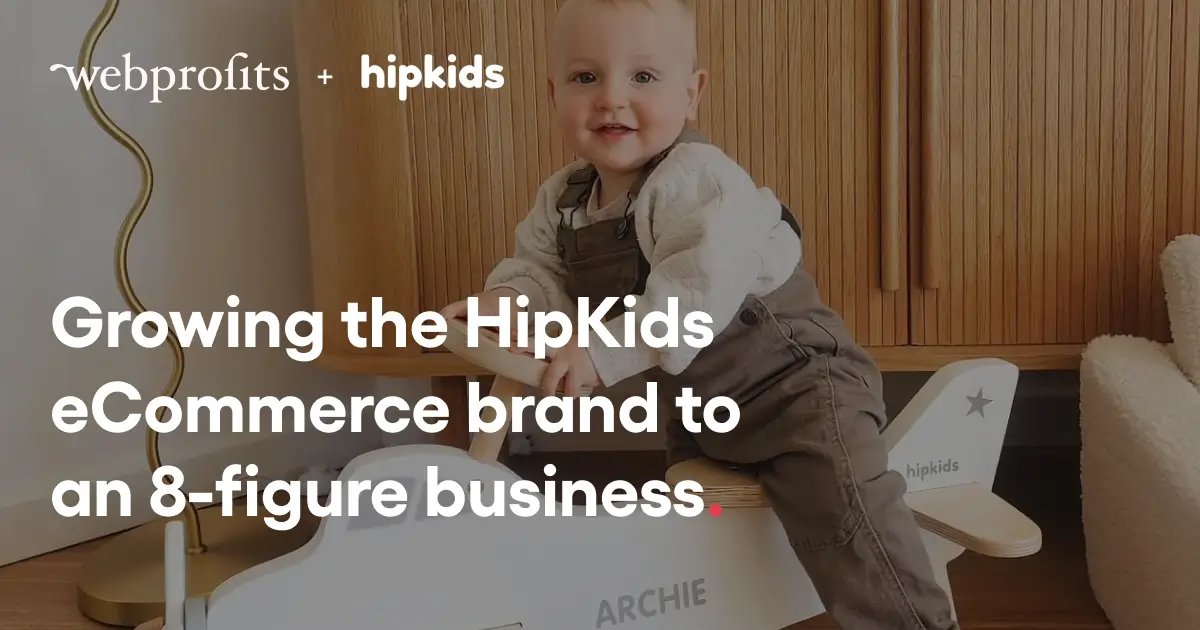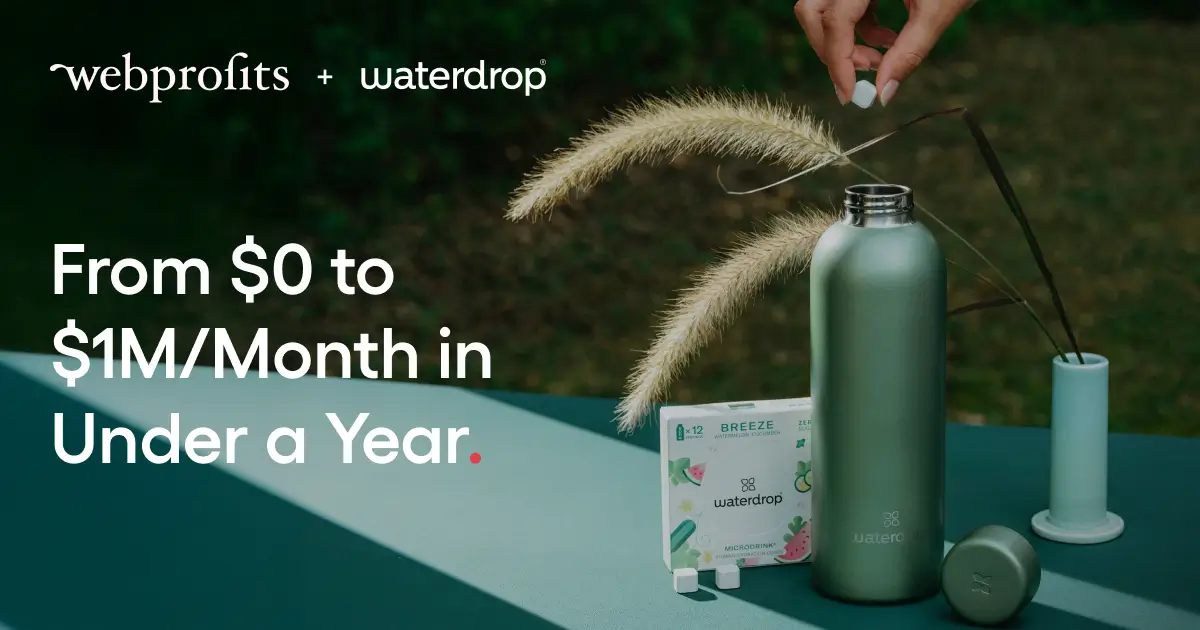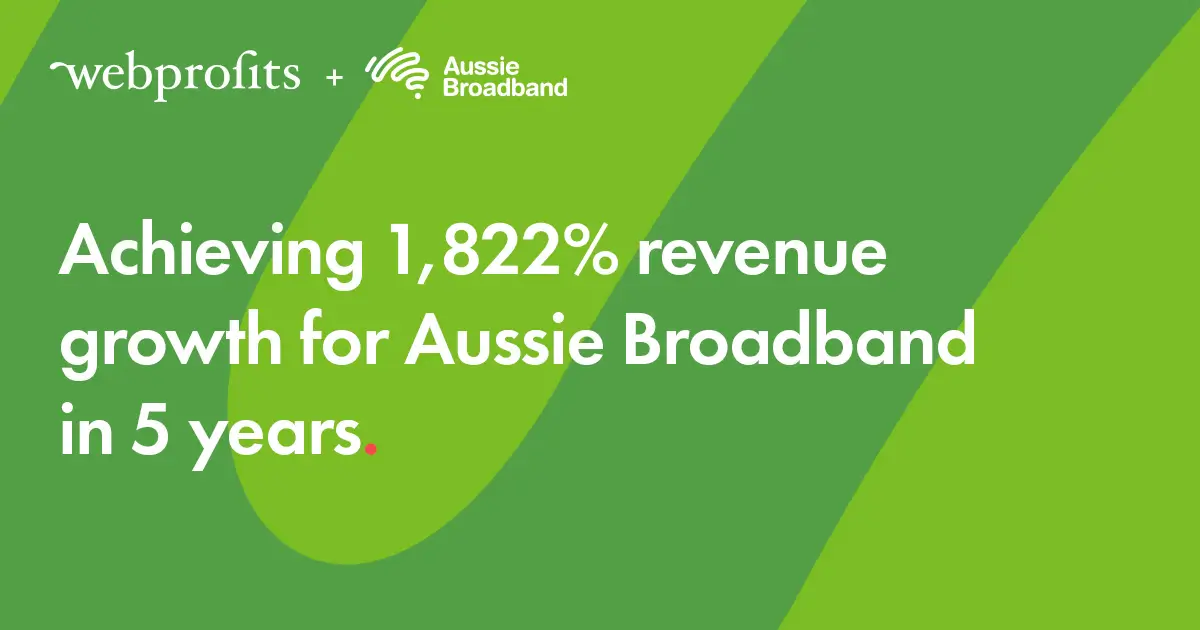How Nespresso Maintain Market Dominance
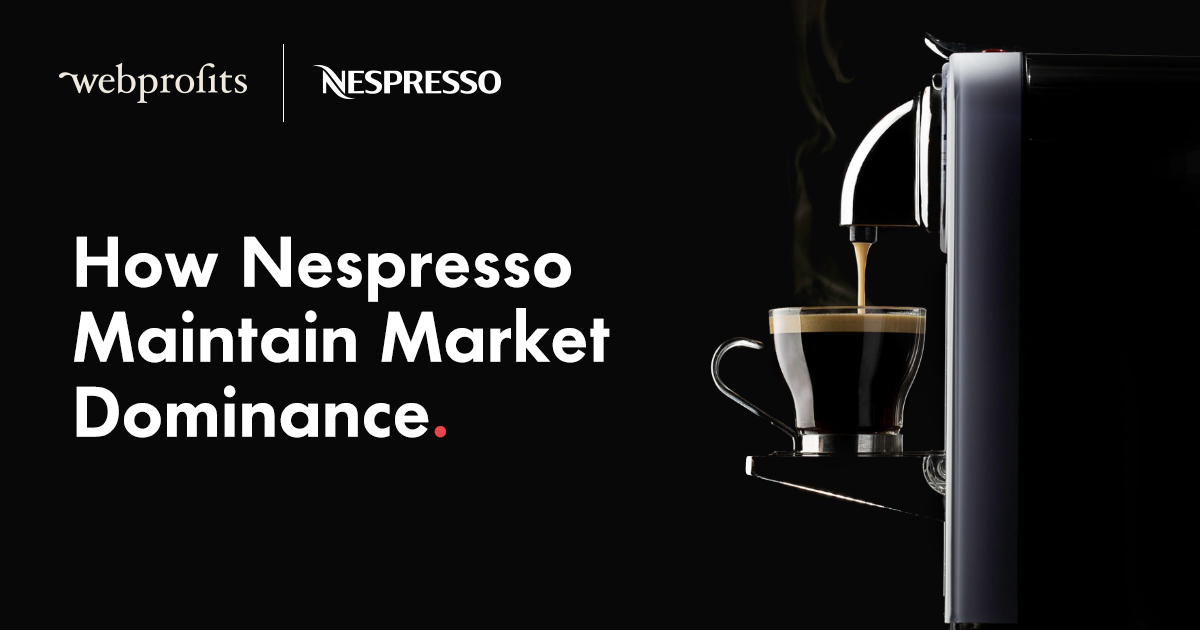
Nespresso changed the coffee industry with their technology in the 80’s.
Their new coffee machine with sealed coffee pods allowed customers to make Italian style coffee, at home, at a fraction of the cost.
35 years later the company is still thriving, turning over more than USD$6.3 billion in 2020, 7% higher than in 2019.
It wasn’t an overnight success – the business initially had a B2B focus selling into offices in Switzerland and Japan. But as they improved the technology, they also started to understand the customer better.
This happened to coincide with the growth of coffee drinking culture and the rise of Starbucks in Europe in the 90s. Suddenly, people were looking for ways to have barista-style coffee at home, and Nespresso were able to provide it at a relatively low cost.
They were able to build up a big lead on their competitors by patenting the technology that led to their success, but those patents started expiring in 2012.
Since then, a number of alternatives (to both the machinery and the pods) have launched and grown, but Nespresso also has to contend with instant coffee, filter coffee, french-press, stove-top, as well as barista style coffee at home and takeaway from cafes.
With so many ways to enjoy a cup of coffee, this article will explore how Nestle use digital marketing to maintain their 30 year position as a market leader.
They focus on generating recurring revenue
Nespresso machines were considered groundbreaking technology when they were first invented. Even today, the concept of how it works is pretty interesting.
In my opinion, though, from a business point of view, it was their revenue model that enabled them to grow quickly.
Buying a Nespresso machine earns you entry into the Nespresso Club. Among many benefits (which we’ll talk about later) the Club was how you ordered your coffee pods.
At this point Nespresso didn’t have any retail stores and, as it was 1989, they didn’t have a website either. Buying pods was done through mail order or over the phone, and Nespresso used the forms to create a database of their customer’s preferences and ordering habits.
They were building a CRM in the 1980s because even then they knew that their success was based on ongoing customer sales and not the initial order.
They make it easy for customers to repeat purchase
A critical step to acquiring and then establishing recurring revenue from their customers was to make it as easy as possible for them to buy time and time again.
They have a subscription service
One of the ways they ensure their customers never run out of supply is by having a subscription service.
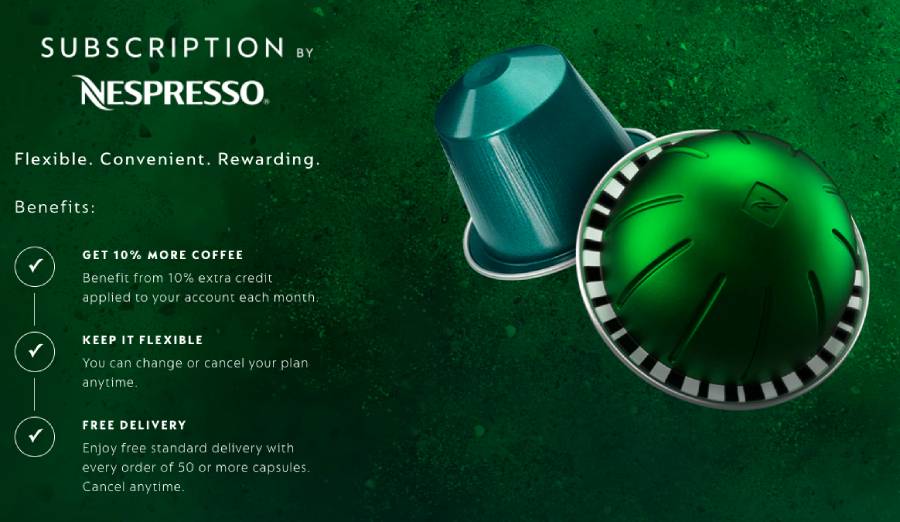
Not only is having a subscription convenient, but it also comes with added benefits such as discounts, free delivery, and a lot of flexibility.
This format of subscription gives the customer credits, which they redeem each month by logging in and deciding which flavours they want to order.
They make it easy to re-order
Don’t want to commit to a subscription? Not a problem, they make it easy to re-order whatever you ordered last time.
And I mean really easy.
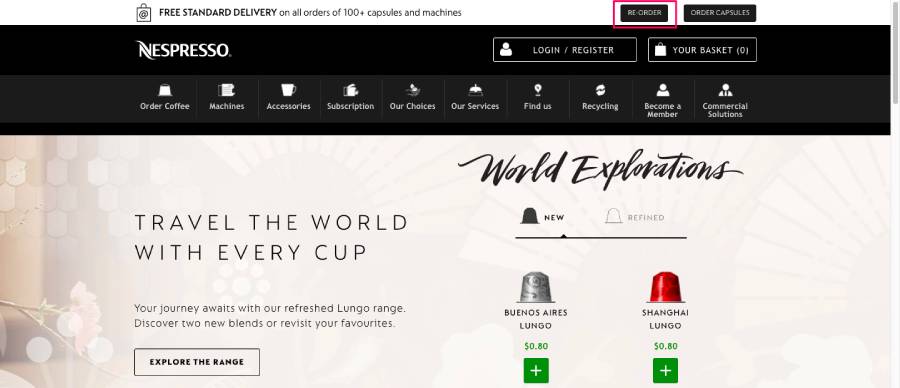
This is a screenshot on their homepage. Notice the button to re-order right at the top of the page?
The customer hasn’t even signed in yet and they can click to re-order. Clicking this button takes you through to a page that lists your orders so you can easily select one for re-order.
They let customers set up recurring orders
Similar to the subscription (but without the benefit of discounted pods), Nespresso allow customers to set up recurring orders through a service called Easy Order.
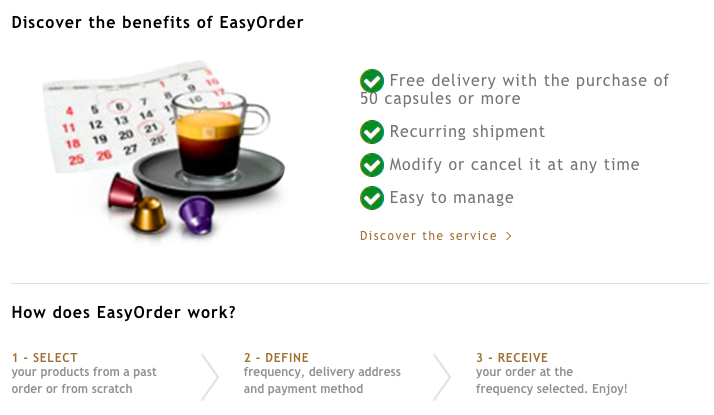
This method is even easier for customers who know exactly what they want.
Their machines are a loss leader
Selling pods to customers for years is how Nespresso make money, but those customers need a machine in order to use the pods.
Today there are hundreds of makes and models for pod-based coffee machines, and as a brand that positions itself as a luxury item, you would expect Nespresso to be more expensive than their competitors.
That might be true for the high-end machines, but Nespresso’s strategy, particularly in the early days, was to sell the entry level machines at lower prices and make money off the back of selling pods in the long term.
It’s a classic Razor-Razorblade strategy that worked so well for Gillette.
Now, Nespresso have taken the approach to the next level by selling their machines for $1.
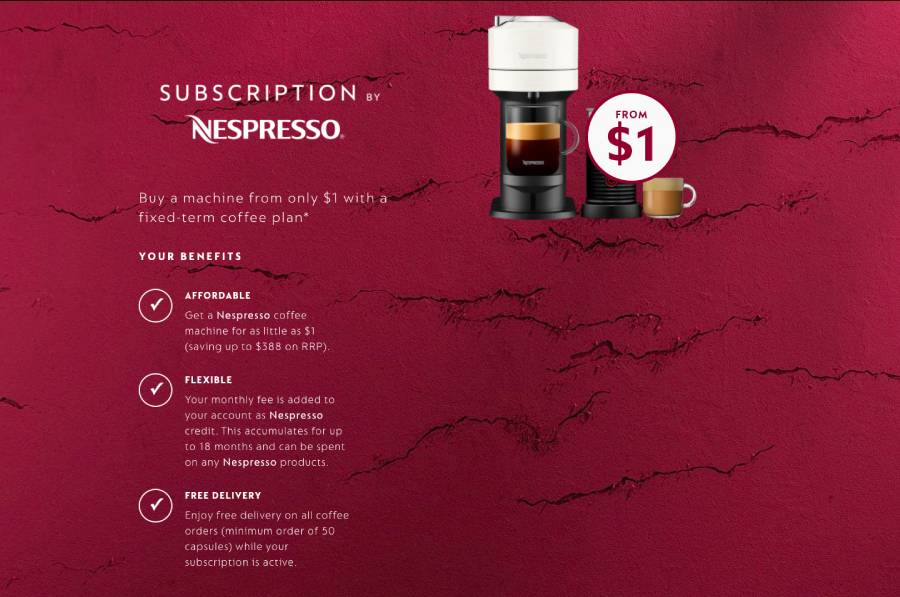
Though the machine only costs $1, the customer has to sign up for a 12 month subscription where the monthly fee is used to purchase coffee pods.
They keep innovating with new products
One thing that’s important to note is that you can only focus on long term revenue if your product or service delivers true value to your customers.
Nespresso may not taste quite like your fresh barista made coffee topped with Louvre-worthy foam art. However, Nespresso keep innovating with new flavours and origin roasts to keep customers interested. Something your local barista can’t or won’t do.

These new flavours are usually limited edition and run in seasonal batches. The point isn’t to get the customer hooked onto a new flavour, it’s to give them something new to try when they go to purchase their usual order.
This helps to keep the experience different and interesting, which ensures the customer continues to buy from them for a longer period of time.
My regulars are Nicaragua and Kazaar. But at this writing I’m currently also enjoying Buenos Aires and am a bit intrigued by Stockholm.
Key Takeaway: In a world where businesses are often chasing short term gains, Nespresso buck the trend by recognising the lifetime value of a customer over their initial order. Not only do they make it technically easy for customers to buy from them, they ensure the experience remains interesting by releasing new flavours so that customers keep wanting to come back.
They differentiate based on quality
As we touched on earlier, there are many alternative ways to drink coffee.
As well as all the other pod providers, Nespresso’s audience have other techniques they could use, such as instant or filter coffee.
Nespresso distance themselves from both by positioning themselves as a luxury, high-end, brand. And they’ve done this from the get go.
Here’s a quote from their former CEO, Jean-Paul Gaillard.
“I wanted to create the Chanel of coffee, and decided to keep it chic and bobo. The idea was to keep it to the level of people who have a doorman”.
So, how do they do it?
They know their audience
First and foremost, Nespresso take the time to understand their audience.
You can see from the quote above that they had specific customers in mind, but there’s evidence to suggest they continue to invest in understanding what their customers are like and what they want.
In this case study we can see that Nespresso used social listening tools to find insights on how and why people make and drink coffee.
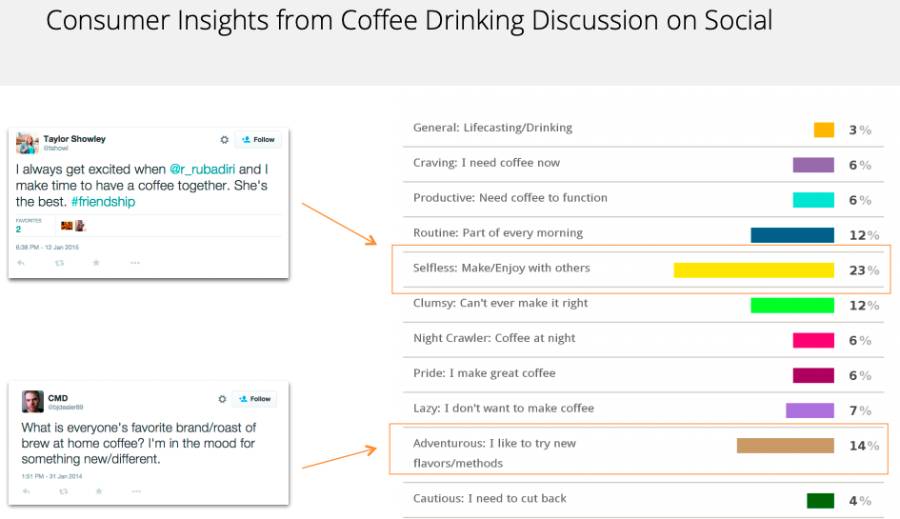
The case study goes on to outline the details and performance of a specific campaign, but it’s clear that Nespresso use these insights across the rest of their marketing.
They speak to a specific segment of the market
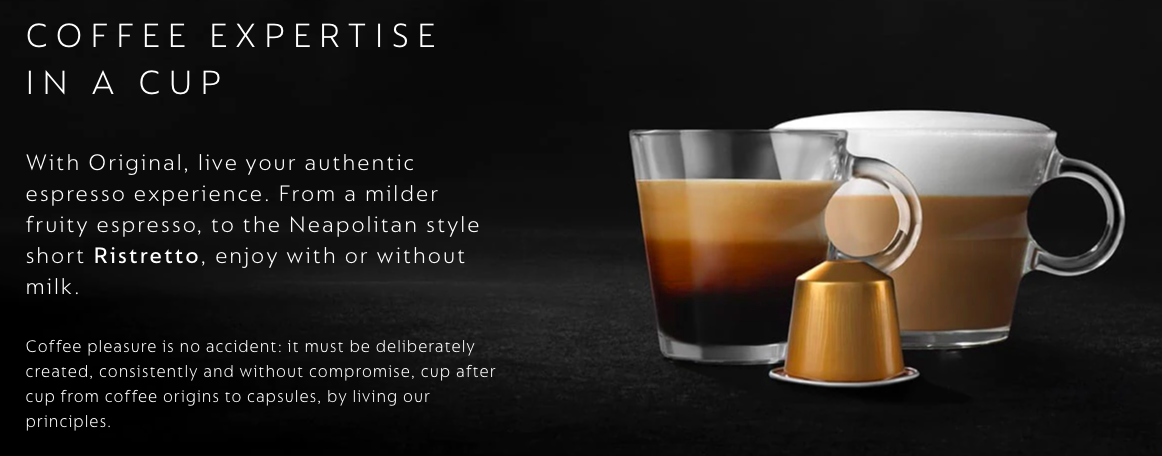
Here’s a screenshot and quote from their website.
“Coffee pleasure is no accident: it must be deliberately created, consistently and without compromise, cup after cup from coffee origins to capsules, by living our principles.”
They’re not speaking to standard coffee drinkers, they’re communicating with coffee aficionados (dare I say coffee snobs?). Or at least coffee regulars who drink coffee enough to taste the difference between a flat white and latte.
You can also see it in their Google Ad copy.
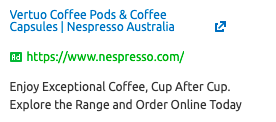
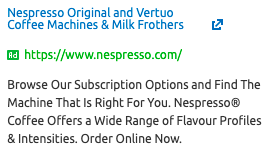
Their product is for people looking for “exceptional” coffee. And they offer a “wide range of flavour profiles & intensities”. People who feel they know coffee. And enjoy it for more than a wake up call.
It’s for people who want to savour their coffee, and are willing to pay a premium for it.
The products look luxurious
Whether it’s on their site, social media, television, or anywhere else, the coffee is always displayed in a clear glass with crema or foam on top.
Here it is on their website.
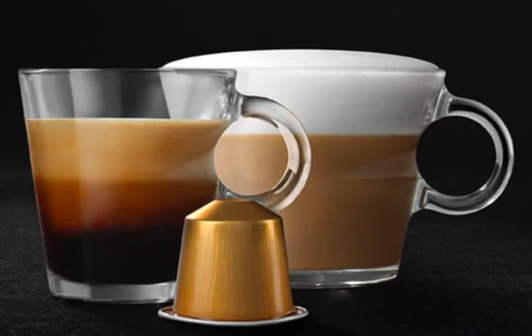
Even in the navigation bar.
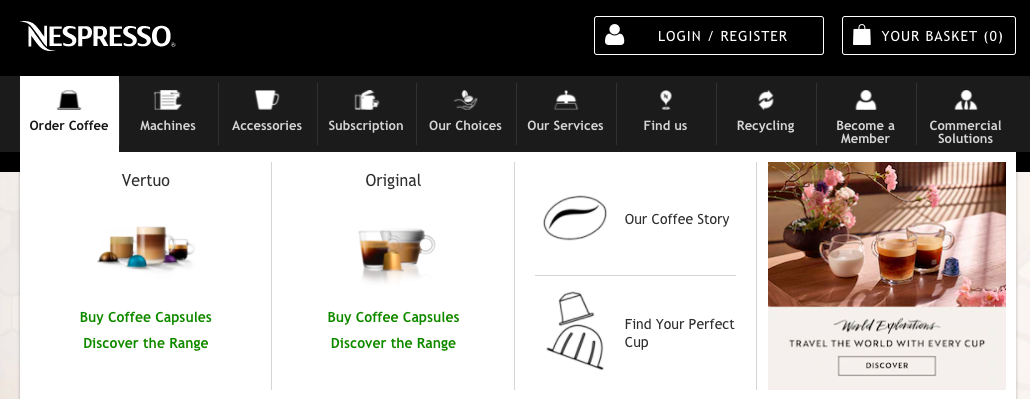
And in their social media ads.
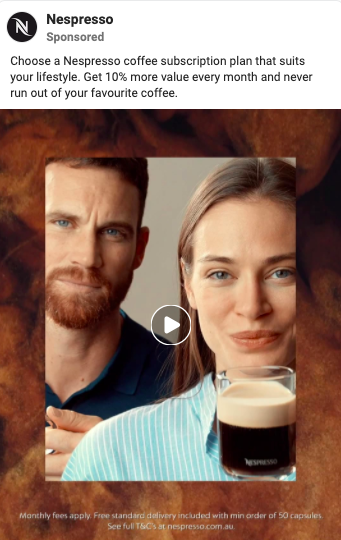
I don’t know about you, but I haven’t had many coffees out of a glass mug. So it’s safe to assume these glass cups are to make sure you don’t miss the message on the depth of flavour and exceptional quality of the coffee in pods across their marketing campaigns. Just look at the colour…
The pods may be more expensive, but they still cost less than $1, and are ⅓ the cost of a barista coffee. And they look sleek enough to be kitchen decor.
Compare that to Nescafé, another coffee brand owned by Nestlé.
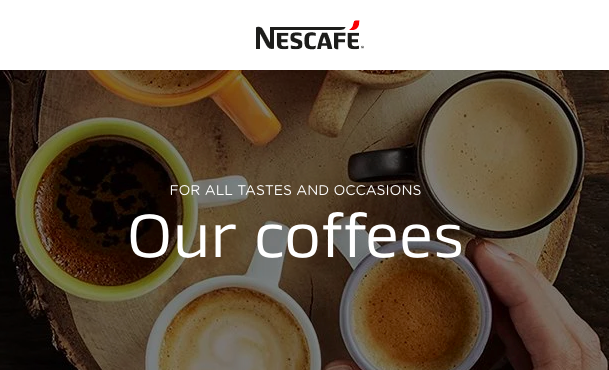
The use of ceramic mugs and a more ‘home-style’ appearance help to differentiate the two products – Nespresso is for barista-quality coffee at home, while Nescafé is very much an instant coffee.
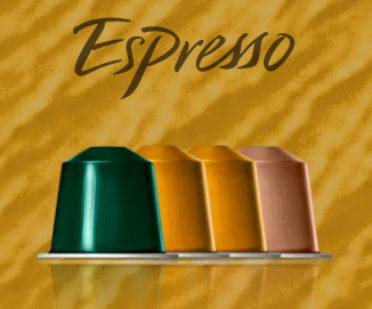
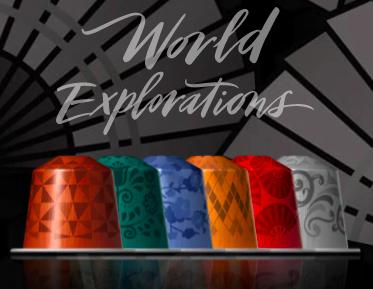
Compare that to worldwide competitor Lavazza’s pods, which – despite using bright colours – look drab compared to Nespresso pods.

They differentiate based on price
Since the invention of money, businesses have been competing on price.
Many claim to have products that are as good – if not better – than others, and they’ll charge you less for them.
Nespresso are the opposite. They price their pods higher to help give the impression of higher quality.
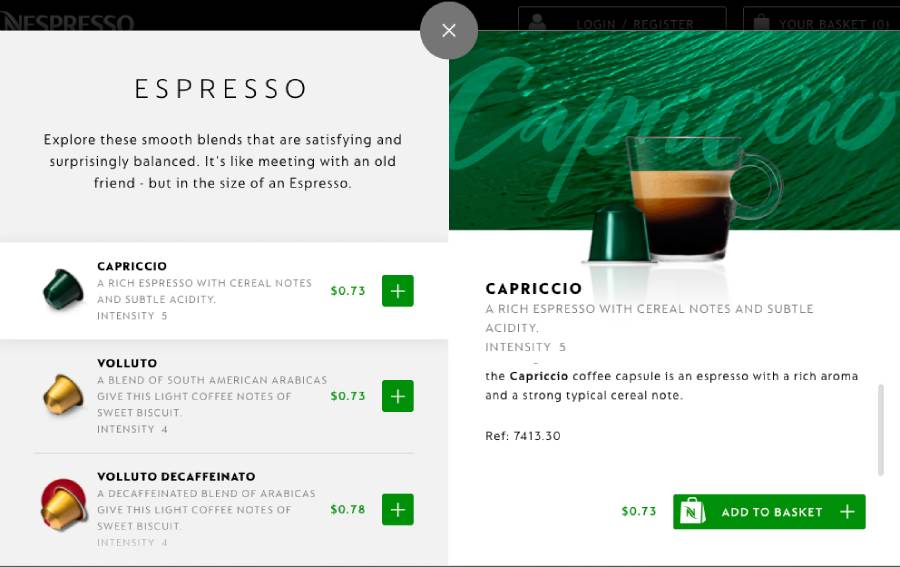
Nespresso pods start at $0.73 each, and can get as expensive as $1 each.
Lavazza, on the other hand, start at $0.69 and go up to $0.71
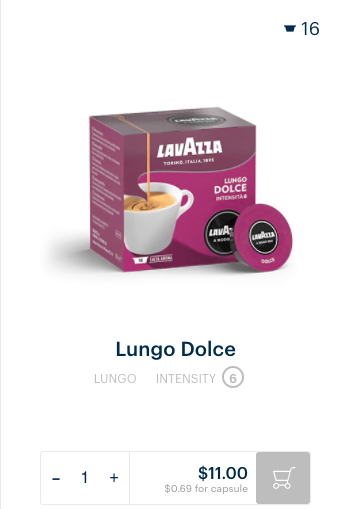
Some other brands advertise their lower prices in Google Ads to attract new customers.
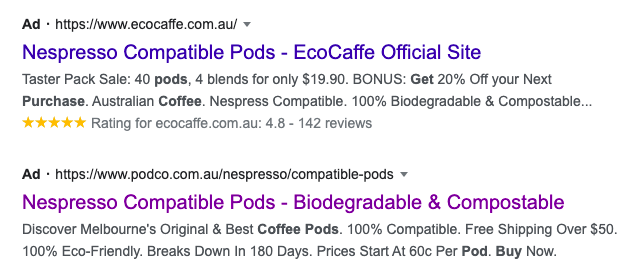
Whereas Nespresso never mention the cost of pods in their ads.
Why?
Because they can’t compete on that proposition. And because, in theory, cost shouldn’t be a factor when the quality (or value) is so high. It’s something customers are willing to fork out more for in return for a better product.
In fact, it might not even matter if the product is truly better or not.
In one study from 2017, researchers found that 80% of people in taste tests say they preferred a more expensive bottle of wine, even when what they drank was identical. It’s known as the marketing placebo effect.
Maybe Nespresso use a higher price point to reinforce the idea that their product is better than their competitors. But clearly, in the Triangle of retail Trade-offs, Nespresso has chosen to compete on quality and service over price.
They associate and partner with similar brands
Nespresso don’t just rely on the look and sound of their products to convey a feeling of high-end sophistication, they reinforce the view with a number of high profile associations.
For example, it’s impossible to think about Nespresso as a brand without looking at their association with the actor, George Clooney.
Intense, unique, balanced, delicate, smooth, rich, deep.
The ad insinuates that the actor shares the same characteristics as the coffee. They couldn’t do more to leverage his reputation and align it with their own brand.
And when it comes to Nespresso, George Clooney isn’t just an actor hired to shoot commercials. He’s a brand ambassador for them in Europe and North America.
“I’ve been working with Nespresso internationally for nine years, and I really love and respect the brand, what they do, and how they do it,” said George Clooney.
But it’s not just specific celebrities that they align their brand with.
This is one of a series of Facebook videos Nespresso ran in partnership with Melbourne Fashion Week 2021.
The videos highlight stylists, designers, and creative directors sharing their love for coffee and working in fashion.
These are stylish and sophisticated people, who are more relatable than George Clooney, talking about how much they love the product.
Nespresso could have just partnered with Melbourne Fashion Week by plastering their logo all over the event and website, but they took it one step further to create content that shows a more meaningful connection between the two brands.
Key Takeaway: Nespresso use copy, imagery, pricing, and brand association to differentiate themselves from their competitors based on product quality. Importantly, this only works for them because they have spent time understanding that their audience appreciate the finer things in life.
They address their customers’ biggest objections
The coffee industry was estimated to be worth more than $102 billion USD and growing (it’s expected to reach $155 billion USD by 2026).
But it’s not without its problems, and there are two in particular that consumers worry about
The latter in particular is a worry for Nespresso (and other pod producers) whose coffee pods are perceived as doing so much damage that they were banned in the German city of Hamburg in 2016.
It’s such a problem that former Nespresso CEO, and current BEO of Nespresso Oceania, Jean-Paul Gaillard, set up a competing coffee pod manufacturing business that makes fully bio-sourced and biodegradable coffee pods.
He’s not the only one either.
Since Nespresso’s patents expired in 2012, the industry has seen a plethora of eco-friendly competitors.
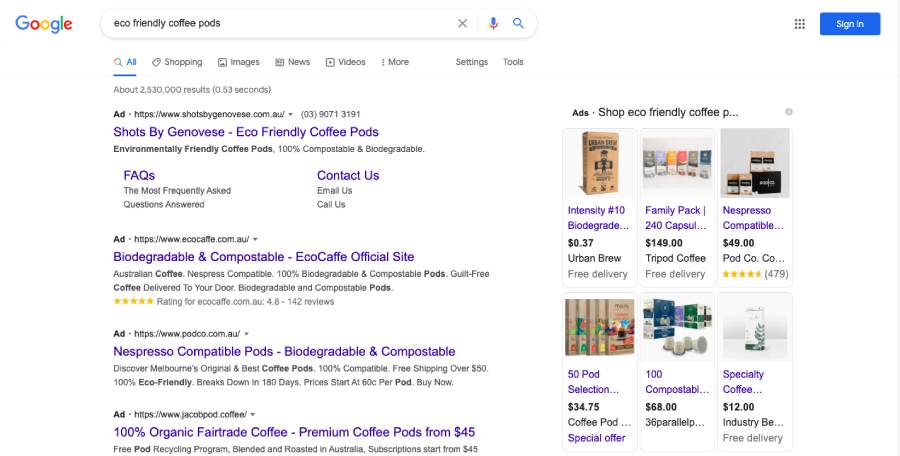
So how exactly does Nespresso address these concerns from their customers and stave off competition from niche-focussed businesses?
N.B: I’m no expert on fair trade and sustainability so I won’t get into the politics of whether Nespresso is doing enough to make the world a better place, or whether it’s all for show. This section will only be examining how they market themselves to overcome the objections.
They make actual business changes to address concerns
First and foremost, it looks like Nespresso have made significant changes or introduced important initiatives to reduce their environmental impact and give coffee farmers a fair deal.
For example, Nespresso pods can’t be recycled with every day recycling, so they have introduced their own recycling scheme.
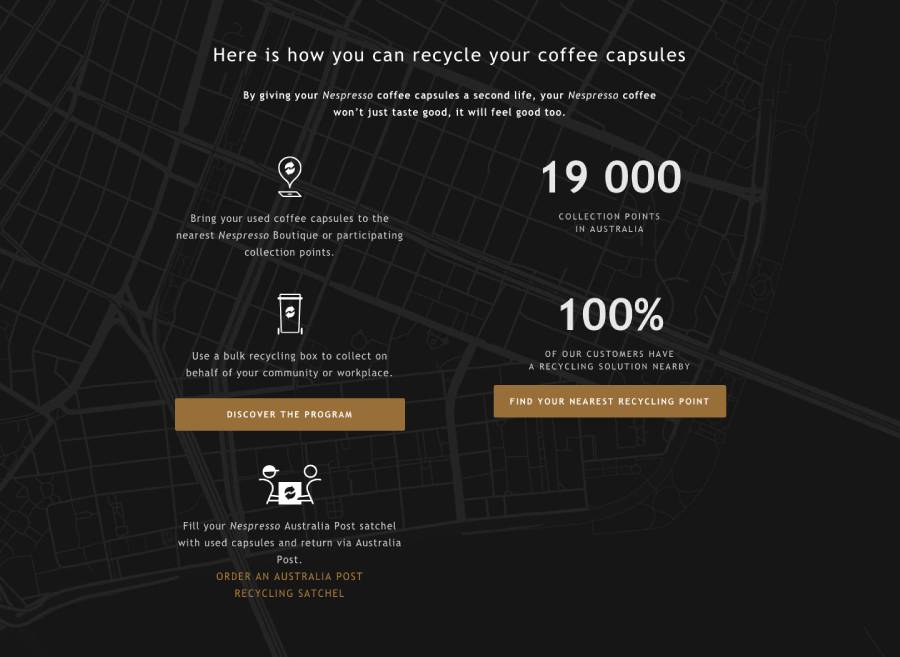
By providing customers with a number of options for recycling their products, they are showing that they also care about the cause.
In 2014, they launched a $550m USD sustainability strategy called The Positive Cup which aims to “create a cup of coffee that has a positive impact on the world”.
The strategy is backed and supported by The Rainforest Alliance, Fairtrade International, the IUCN, and the aforementioned brand ambassador, George Clooney.
The strategy includes a website where they share information about the initiatives they run, news about how they’re performing, stories of their farmers, and more.
This is all in addition to the extensive amount of content their main website has in relation to their commitment to sustainable practices and fair trade for the farmers that grow their product.
The content is often very detailed, and they don’t just take the time to explain what they’re doing, they also take time and effort to explain why they do things the way they do.
For example, why they use the materials they do and what they do with them afterwards.
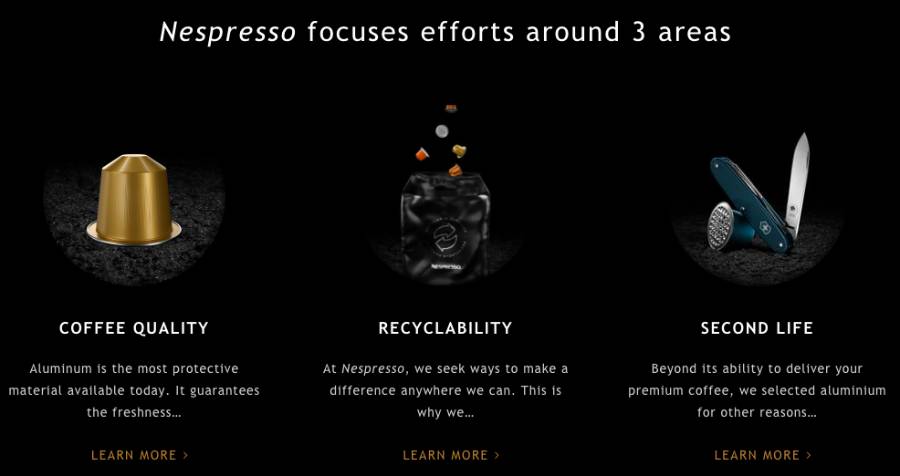
They address main buyer objections proactively
Nespresso knows that their competitors on Google Ads are going to use the fact that they are more eco-friendly as a selling point, so Nespresso are proactive in addressing this in their ad copy.
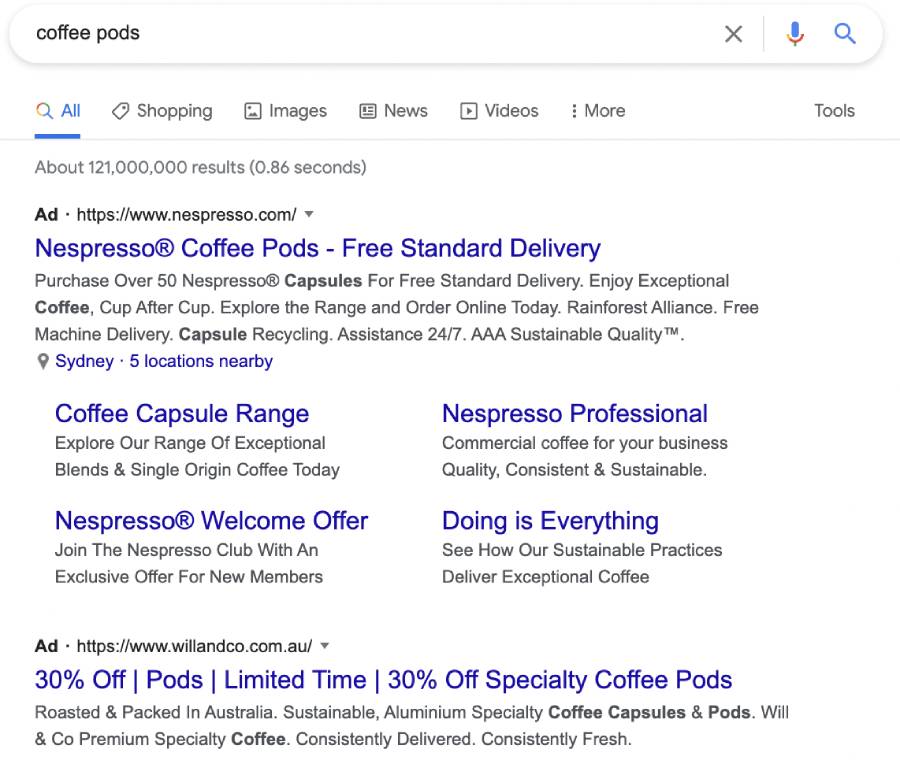
Here you can see Google Ads results for the search term “coffee pod”.
Even though the user hasn’t searched for anything to do with sustainability, they still highlight their partnership with the rainforest alliance, the AAA sustainable quality and their capsule recycling program.
Why?
Because they know that their customers are conscious consumers, and care about the social/environmental impact of their purchases. Nespresso know that sustainability is an important buying consideration, even if the customer isn’t actively searching for it.
They also know their competitors will play on this as a key selling point against Nespresso. In this case, Will & Co, who lead with their sustainability message followed by coffee quality. Interestingly, Will & Co lead with ‘Roasted & Packed in Australia’. This is clever, and plays to the rise in the ‘buy and support local’ sentiment on search, that’s emerged since COVID. Which is perhaps the one selling point Nespresso can not compete with given all of their pods originate from their three factories in Switzerland.
It’s their main focus on Facebook ads
Nespresso run a number of ads on Facebook to ensure that their audience knows they are committed to sustainability.
This ad is great in that it brings together a number of different factors
- What they’re doing (recycling capsules, planting trees, etc) to help them hit their target of being carbon neutral by 2022
- It shows that they think sustainability is linked to making a high quality cup of coffee (their key differentiator)
- They leverage the status and profile of their brand ambassador, George Clooney
By combining those three points, they are more likely to resonate with an audience who wants to believe that they can do good in the world.
These ads on sustainability all begin with the copy “with every cup….”, merging the message that subscribing to and drinking Nespresso contributes to a carbon neutral future.
There are also currently 8 ads* promoting a 6 month trial with Mosman and Willoughby councils in Sydney, Australia. Residents in these areas will be able to recycle Nespresso pods using their standard yellow bin. I have no idea how council approvals like this work, but this would not have been easy – and they are now paying via ads to make recycling as accessible as possible.
Clearly their focus on reducing their environmental impact is a message they are serious about actioning and conveying.
*At the time of reviewing the website and campaigns.
Key Takeaway: Nespresso knows sustainability and fair trade are two big concerns about their industry and for their target market. They acknowledge those concerns head on by making changes to their operations, and promote these efforts to align with their customer’s values in their marketing.
They bridge the gap between online and offline
Nespresso are an interesting business in that they only opened brick-and-mortar retail stores after running online and via mail order for years.
Despite that (or maybe because of it?) one of the things they do really well is provide an omnichannel experience for the customer.
They make the in-store and digital experiences as similar as possible with a number of small tactics and initiatives that make things better for the people who buy their products.
They provide advice no matter where you’re buying from
Nespresso currently stock more than 15 different machines and 70 different pods on their website.
Even for an experienced coffee enthusiast it must be hard to distinguish between the products and decide what you actually want to buy.
The product descriptions can only help you so much, right?
Well, one of the primary functions of the store is to have staff on hand who can help advise you on which products are right for your preferences and situation. There’s also a tasting cafe where you can sample the different flavours to find your favourite.
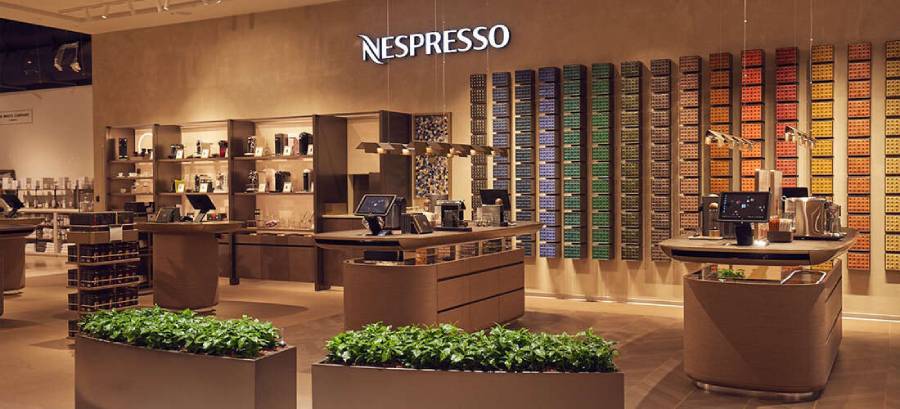
Having that option available to customers really helps them make a purchasing decision, and probably means they are likely to spend more.
Nespresso aim to bring that same experience online with an interactive questionnaire to help their audience narrow down their preferences and then recommends specific flavours.
They put the tool in the navigation bar so it’s really easy to find.
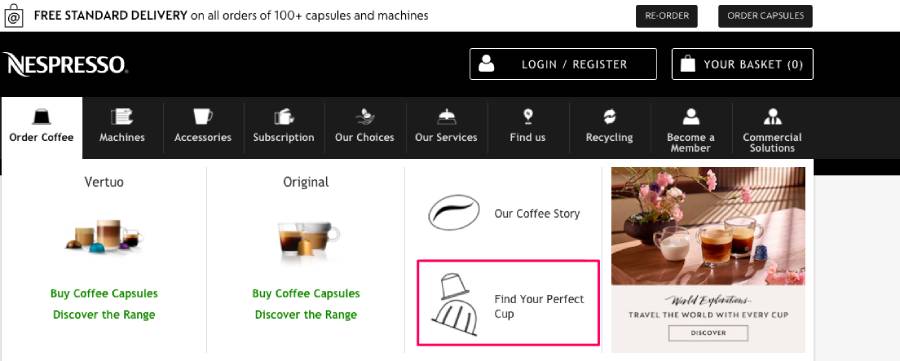
The experience itself is really sleek and stylish, as you would expect, and there’s only 7 questions to answer before getting your result.
But the questions are also a bit quirky and interesting, so it’s fun to run through.
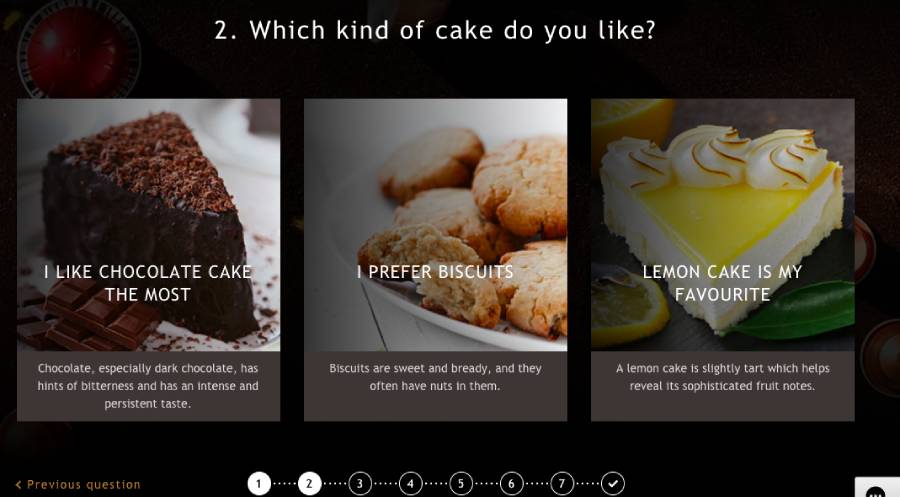
Give it a try yourself and see.
When you finish the quiz you are presented with 5 flavours that they think you will like, and they also make it really easy for you to buy them with CTA buttons under each product, and an option to buy a box of them in a bundle so you don’t need to choose between them.
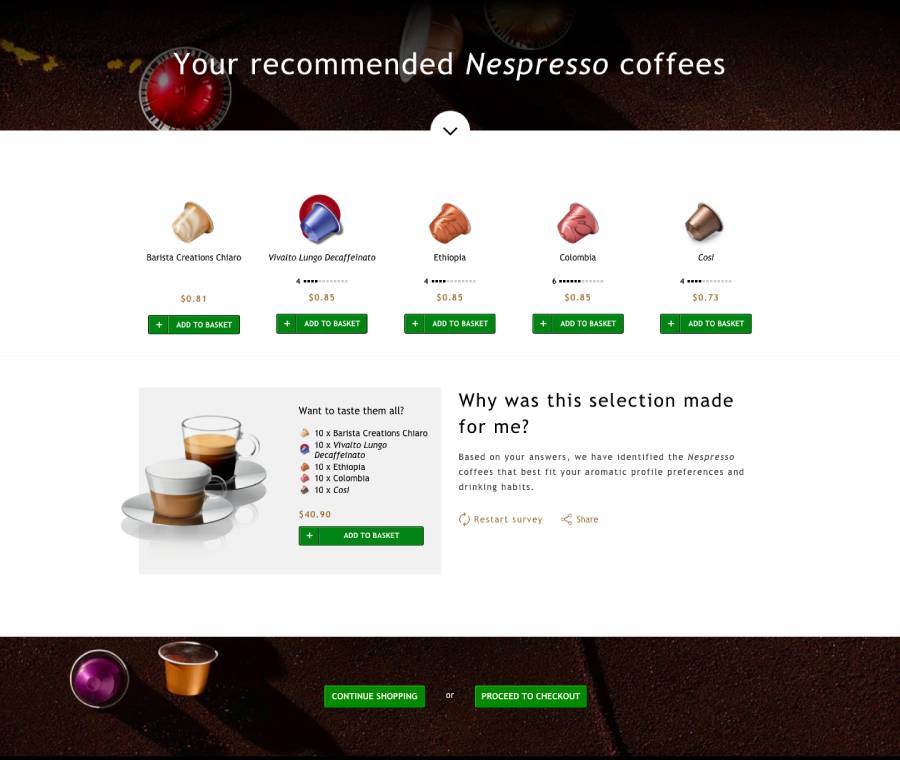
As if that wasn’t enough, they also prompt you with chat support as you checkout, should you need any extra assistance or have any doubts about your purchase.
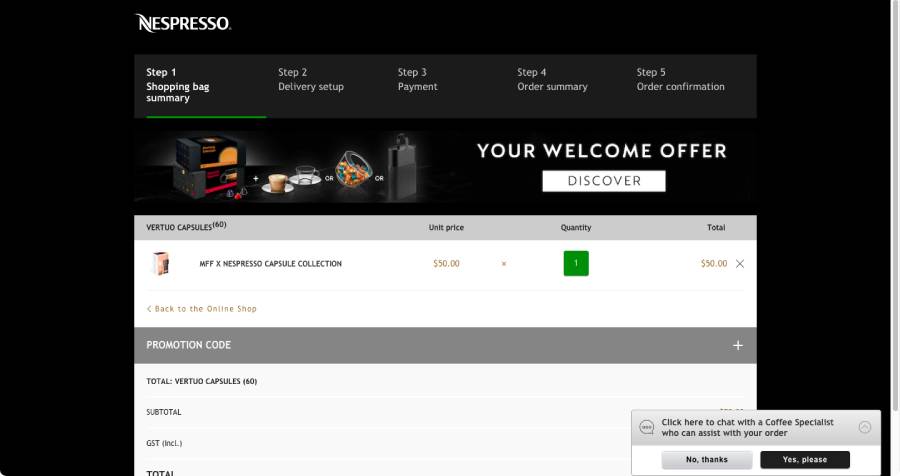
They then use the information they have about you to make sure you don’t purchase the wrong products by accident.
For example, they stock two different kinds of pods, to be used on two different kinds of machines. If you were making a purchase in a store, the attendant would ask you what type of machine you have so you definitely buy the right type of pod.
When you buy pods online and checkout, their system checks what type of machine you have registered and let’s you know if you’re about to make a big mistake.
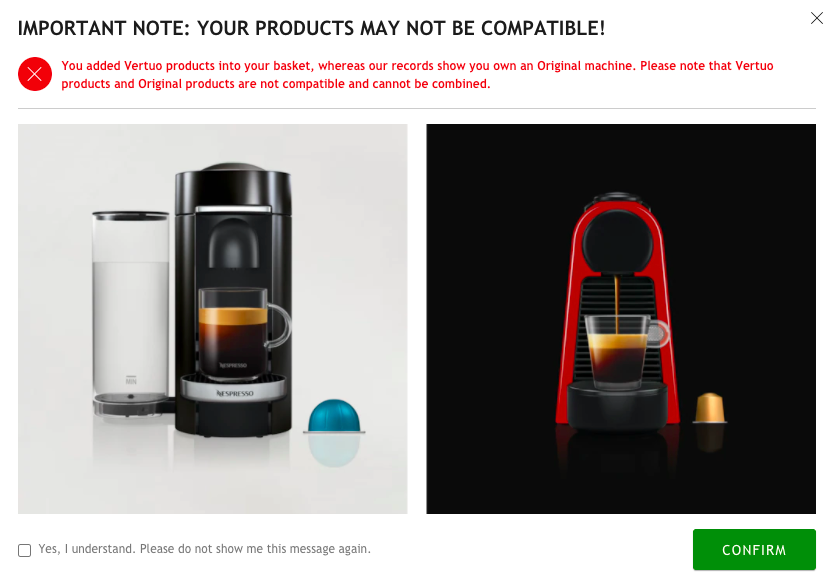
Membership works across channels
Becoming a Nespresso club member comes with a lot of perks, but lots of companies have club memberships.
One thing Nespresso do really well is make sure you get the benefits regardless of how you purchase.
For example, the self-serve checkouts they have in store are only for members, and they prompt you to use your members account by bringing up the app.
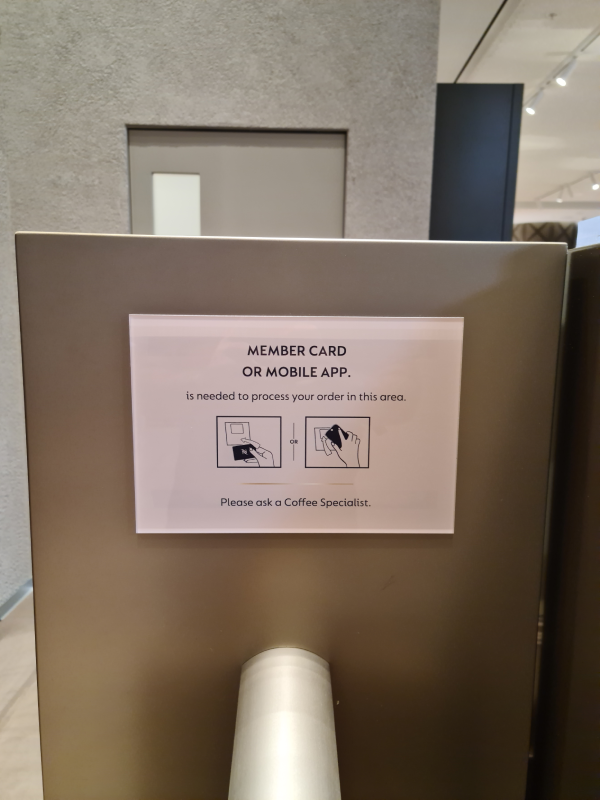
Being able to link the in-store purchase to an online account helps provide a better experience for the customer and improve retention.
They won’t walk past the store and decide not to go in because they can buy their coffee online.
The more opportunities they provide for their customers to buy, the more likely they are to do so.
They brought the in-store experience online during the pandemic
When the pandemic hit, pretty much every business was forced to pivot and find a way to keep going, especially retail stores.
You’d expect a business that sells home coffee machines to do well in a situation where we’re all locked down at home (and they did), but the store plays an important role in a lot of their customer journeys.
It’s a place where potential customers can try the coffee and see first hand if they think it’s better quality than other options. It’s a place where they can ask questions about the different machines, and get tips and advice on what to buy. A place to experience the promise of luxury.
So while they had products that were very much in demand, they couldn’t rely on the same techniques to get the right information out to their potential customers.
With that in mind, they did things like hold live virtual masterclasses to help customers get the most out of their purchases, and engage them with some light hearted content during a difficult time.
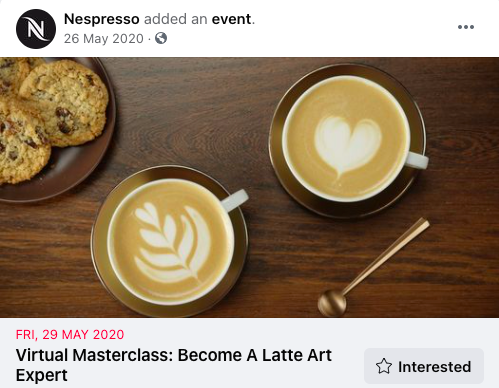
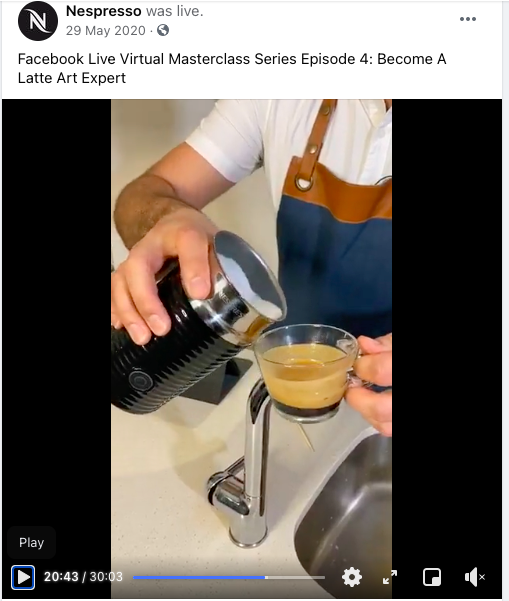
This isn’t massive, but it helps keep staff employed and the customers engaged. I’d call that a win-win.
Key Takeaway: Nespresso want their customers to have a terrific experience regardless of how they purchase, and so they have invested in a true omni-channel approach that gives their customers the best of both worlds. They constantly look for ways to ensure the in-store experience is as similar to the online one as possible.
Summary
Nespresso are an innovative company who create great coffee products and are constantly looking for ways to improve what they do. They may have established their market dominance through being first to market and patenting their technology, but they maintain their position at the top through a few high level strategic decisions around their brand and operations.
They focus on the life time value
Even though the coffee machines could be sold at a good profit, Nespresso are happy to break even or even lose on these margins in order to acquire a customer and draw value from them over the long term. They make it as easy as possible for customers to repeat their purchases so their retention and the customer LTV is high.
They differentiate based on quality
Nespresso is a premium product in the coffee industry but they lean into that image in order to position themselves better with a particular segment of customers – coffee aficionados. They use copy, imagery, pricing, and brand association to give the impression of a luxurious and high quality product, and it works really well.
They address their customers’ biggest objections
Nespresso’s customers worry about sustainability and fair trade, and so Nespresso worry about it too. They invest serious money into solving the challenges and then highlight their actions throughout their marketing to show their customers that their values align.
They bridge the gap between online and offline
A true omni-channel experience is difficult to achieve but Nespresso do it very well. They do what they can to make sure that a customer’s online experience is just as easy and helpful as an in-store experience. Providing a great experience regardless of channels gives the customers more options when it comes to where to buy, which can only help sales.
As a customer and a marketer, my opinion is Nespresso are an impressive brand that does clever marketing for a great consumer product. Ironically though, as Nespresso becomes more popular and mainstream, it also loses some of it’s lustre as a premium coffee offering and is – in a way – its own biggest competitor. I’ll be looking forward to the next pivot in their marketing and how they’ll win in an increasingly crowded market.


